Unless this is your first time reading my blog, you probably know that I like amateur radio and hiking. I’m also a fan of poring over maps, meticulous planning, and madcap races against the clock. I spent months agonising over backpacks, eventually settling on one I could operate my radio from without removing anything. I did 8 parks in 8 hours on foot, practicing quick setups and pack-downs.
So it should probably be no surprise to you that the RaDAR Rally is definitely something I would enjoy. And I’ve been excited about this weekend for quite a while.
 My backpack set up for rapid deployment
My backpack set up for rapid deployment
With only 16 sign-ups in the roster, it’s fair to say that RaDAR Rally is not the most popular contest out there, but maybe with a bit of help from fedi we can change that in the future.
Today though, the lack of other competitors meant no-one else’s time in the field lined up with mine. So without any RaDAR-to-RaDAR contacts to chase, it was just me, my kit, and one long—needlessly difficult—park activation.
My best guess at how long it would take to make contacts, plus a pretty good understanding of how fast I walk and how long it takes me to set up & pack down, suggested I should be able to activate eight separate spots during the 4-hour rally, keeping just over 1km of route between each one. I picked known territory, starting from Longslade Bottom in the New Forest, and planned a circular route that would take me out over the heath and back again.
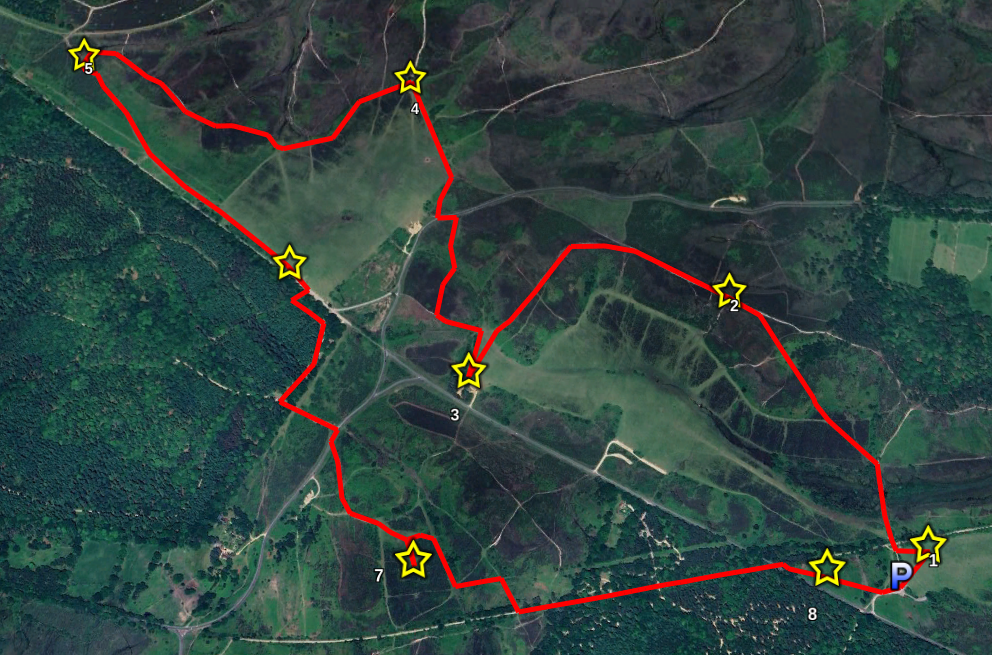 My RaDAR Rally route map
My RaDAR Rally route map
Deployment 1: Longslade Bottom (IO90et62)
Longslade Bottom car park opens directly onto a wide open plain, favourite of many local children, dogs, and horses. I remember many a game of football or cricket with my parents on the grass here in decades past, before or after a walk out into the forest.
 This one is from Summer 1990.
This one is from Summer 1990.
This was my starting point for RaDAR Rally. I set up near to the old railway line, and at 1256Z I had my first contact with the other prolific local activator, Roger M0AUI. After a brief chat about the new parks in the area, I moved on—the countdown had started, with four hours on the clock.
POTA and SOTA contacts count double for the contest, so that was my focus. After the park-to-park with M0AUI, I got three more into the log in short order. There was then a bit of a wait for my fifth, but I managed a QSO with SQ6OWM eventually. I also got my first HOTA activation of the day.
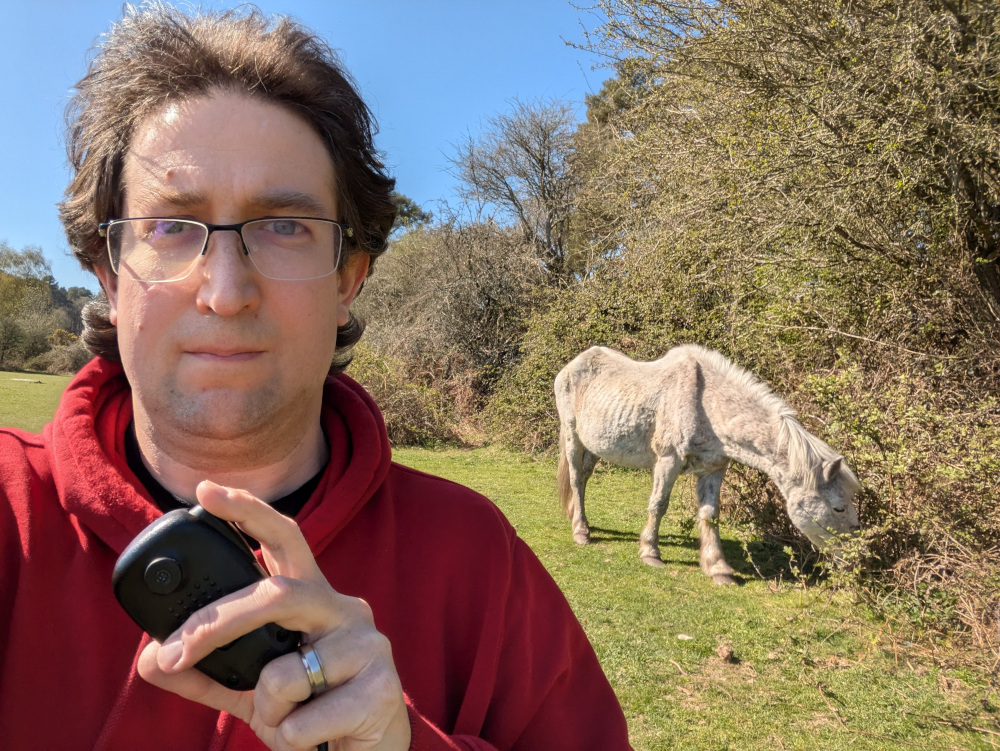 Horse on the Air at Longslade Bottom
Horse on the Air at Longslade Bottom
But 20 minutes had passed since my first QSO. With 5 in the log, the rules of RaDAR Rally allowed me to move on—so I packed up and headed out.
Deployment 2: Bridleway on the Ridge, Hinchelsea Moor (IO90et44)
I passed under the old railway bridge, the start of many childhood walks—I’d come back to the former railway line trail later. For now, it was on to deployment location number 2, up on the ridge. I headed for the same spot as my previous New Forest activation. Sadly it’s looking a bit more burnt these days; whether from natural causes or not I don’t know. However, there was still plenty of space for a portable radio station.
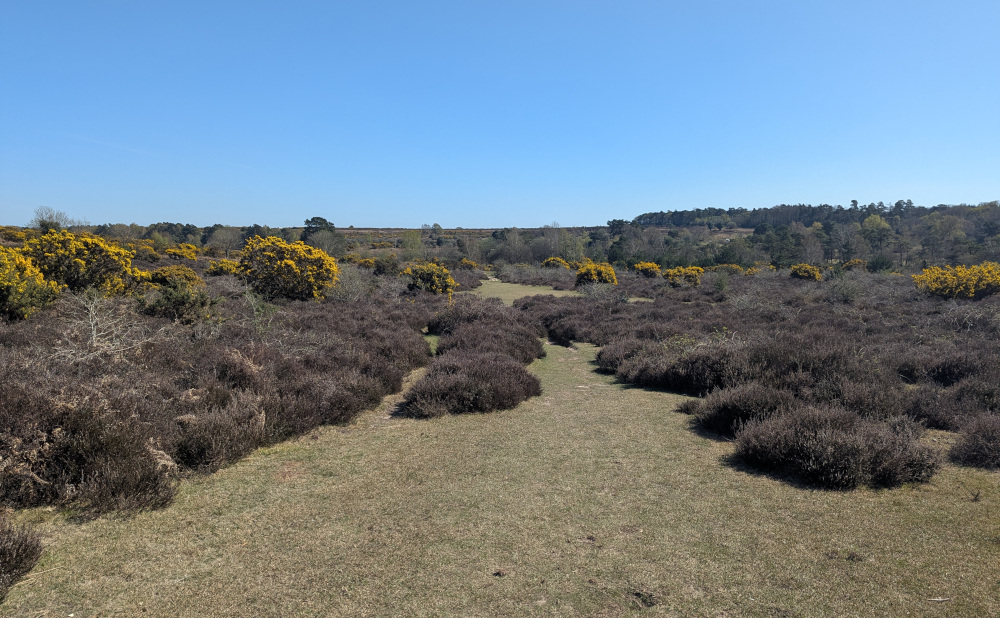 View over the heath from location 2
View over the heath from location 2
After one park-to-park QSO, I struggled to get any more, so I set up on a frequency of my own and called CQ. The 20 metre band was popping this afternoon, but mostly full of contesters, so it took a while to find some space. But I didn’t want to waste time retuning the antenna, so I perservered with the band. Five minutes and another seven QSOs later, I was done here and it was time to move on again.
Deployment 3: Longslade Heath (IO90et33)
Walking west along the ridge, the path splits in two. The left fork curves around to the south, before dropping steeply down back into the valley past Horseshoe Bottom at the section called Longslade Heath. To reach the qualifying 1km distance I headed down then back up the other side of the valley towards the car park, then took refuge in the shade of a huge willow tree for the next stage of the rally.
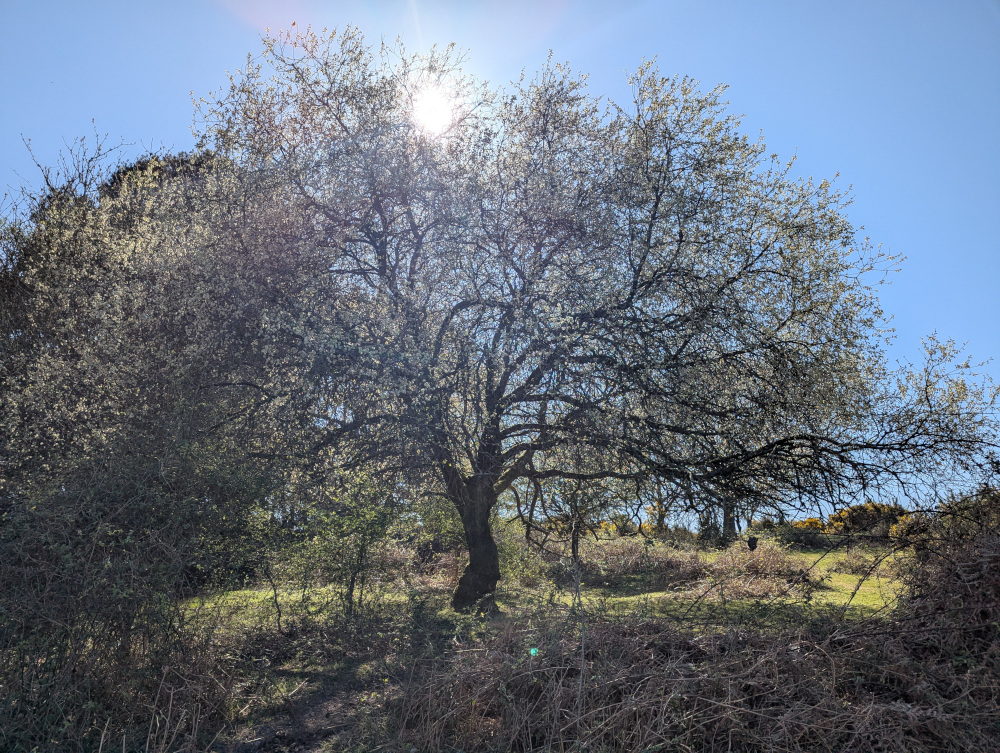 The willow tree at Longslade Heath
The willow tree at Longslade Heath
One park-to-park 3-fer, four standard contacts, and one cup of tea later, I had my five and it was time to move on again.
Deployment 4: Wilverley Plain, North Corner (IO90et36)
I headed west up to the road, crossed over, then headed north across Wilverley Plain until I reached the very top corner. After a quick chat with a passer-by, where I confirmed that amateur radio sadly did not involve DJing, it was time to set up.
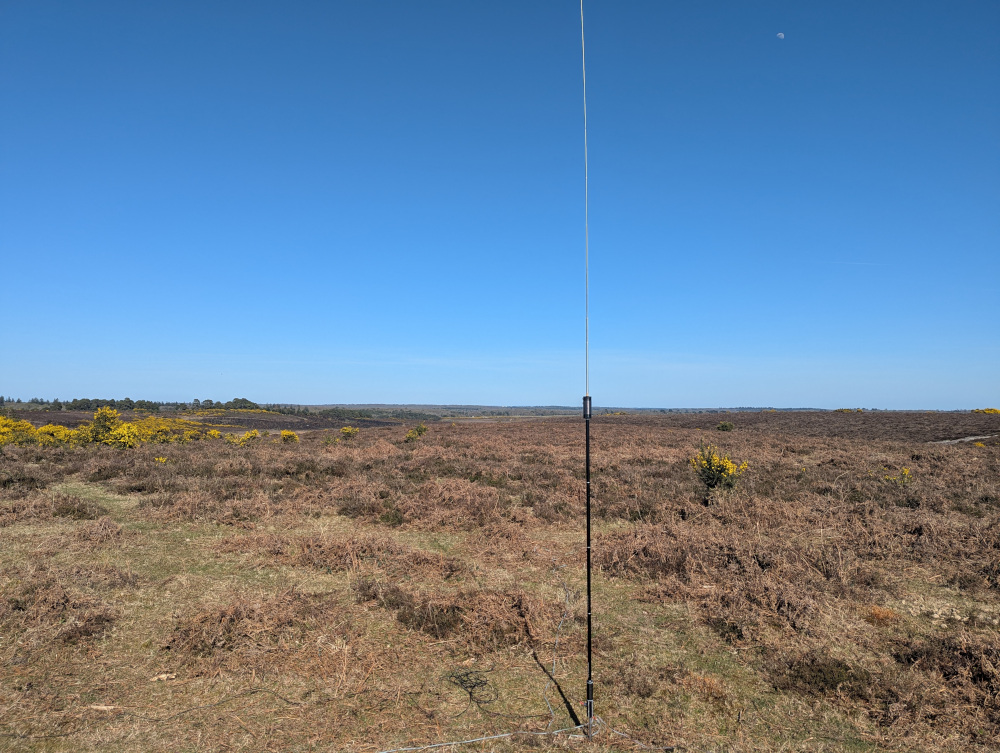 The JPC-12 vertical set up at location 4
The JPC-12 vertical set up at location 4
The ground was getting solid out here, and I struggled to get the ground spike in. But after a while I found a good spot, got set up, and got another six in the log from this position. The moon was riding high in the sky now, and the view was clear all across the heath to the east, to where the wide blue sky touched the horizon.
Deployment 5: Hinchelsea Moor, near Wilverley Oak (IO90et15)
It was time to turn west again, and hike out onto the heath proper. The dog walkers and the kids and even the horses had been left behind now. Nothing but me, the trail, the gorse and the heather; no noise but the birds and the wind and the crunching of my boots on the ground.
Once the fence hove into view, I bore left, and found an open clearing just north of the old Wilverley Oak tree. A single hawthorn stood here, and on the ground beside it a pile of white stones.
With the moon hovering above my antenna once more, it felt like a good omen.
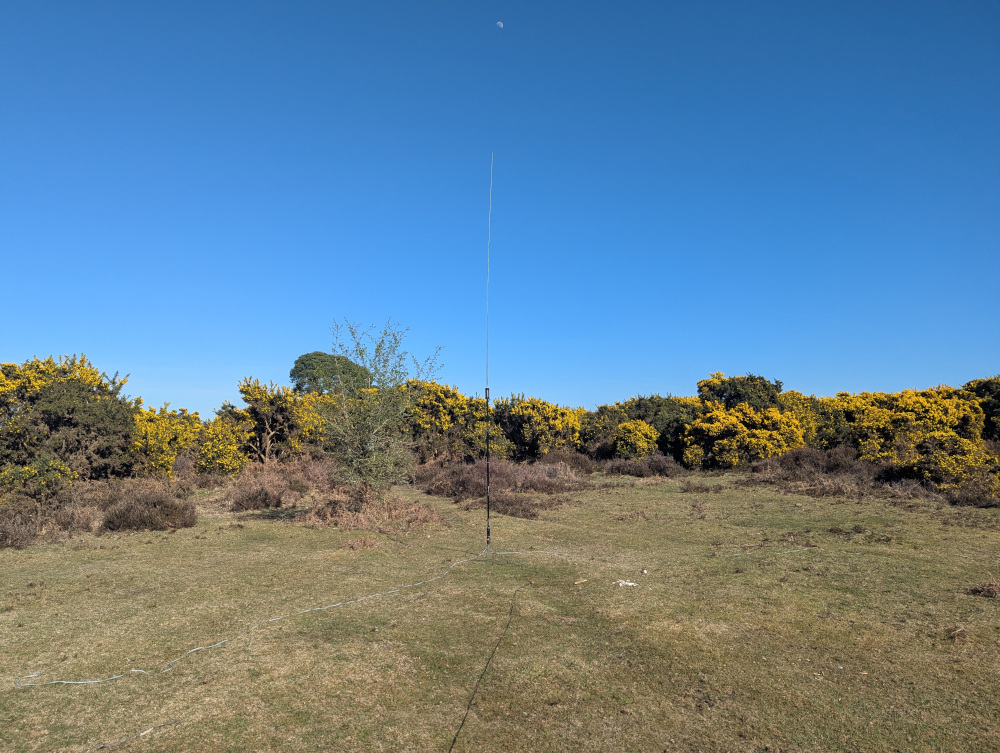 My equipment set up at location 5
My equipment set up at location 5
Six more contacts in the log, and it was time to move on again.
Deployment 6: Wilverley Plain, South Corner (IO90et24)
I hiked back along the grass by the road, heading for the car park at Wilverley Plain—back to people. They mostly seemed to be heading home at this point; it was half past four local time and the sun was starting to dip behind the trees. Despite the warm weather and the clocks going forward, it still wasn’t summer yet. But it wasn’t home time for me—with 90 minutes left on the clock, and a shadow falling slowly over the plain, it was time to set up for number six.
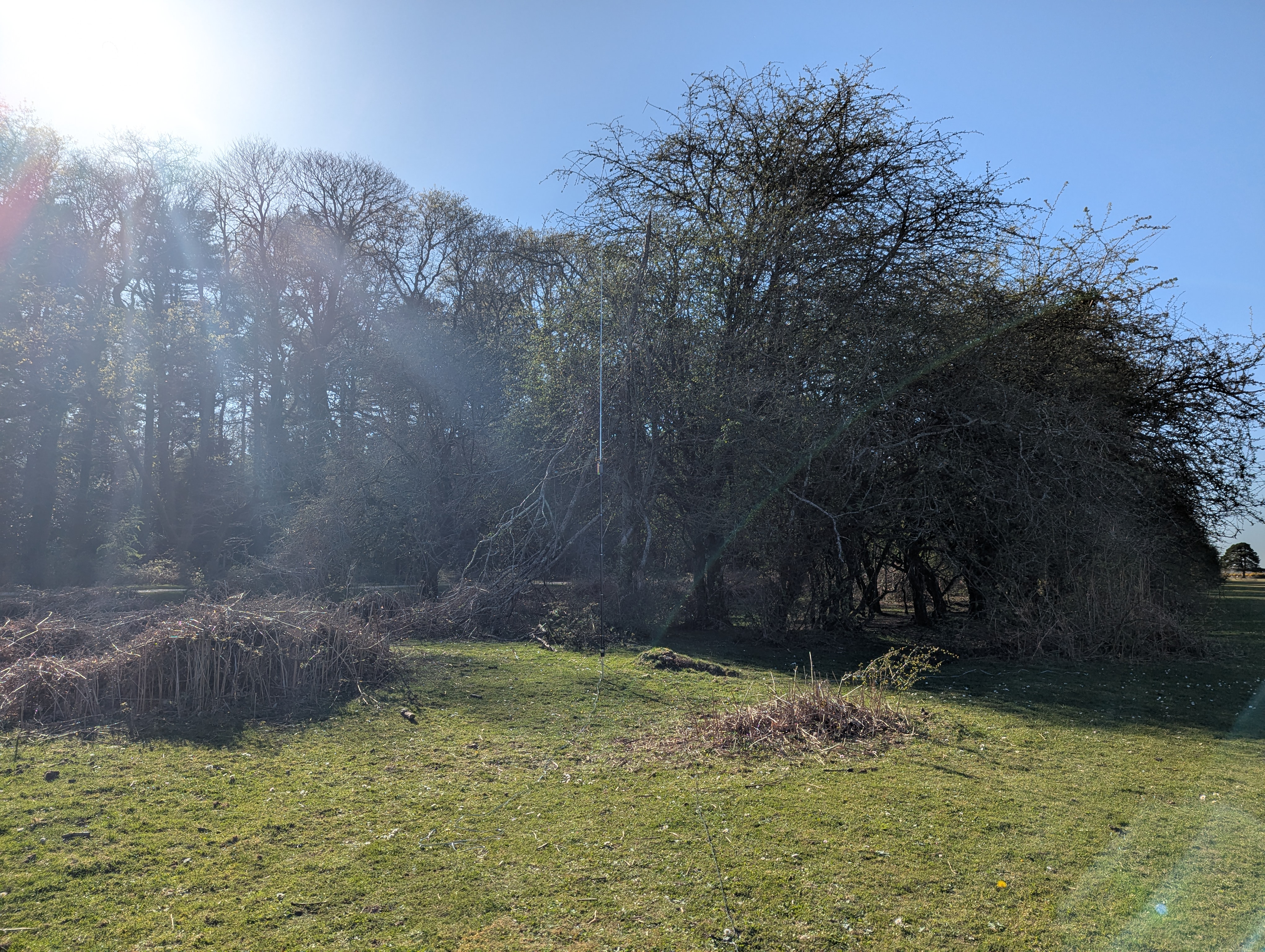 My antenna set up at location 6
My antenna set up at location 6
I was struggling for contacts now, making a couple of park-to-parks, but taking ten minutes of CQ calling to complete the five I needed for the rally. Time to pack up and head out again.
Deployment 7: Yewtree Bottom (IO90et32)
I turned south, passing briefly through the forested Wilverley Enclosure, before following the gravel track round to the east and dropping down into Yewtree Bottom. A circle of grass almost entirely surrounded by heather seemed like the ideal spot to set up for the seventh spot of the day.
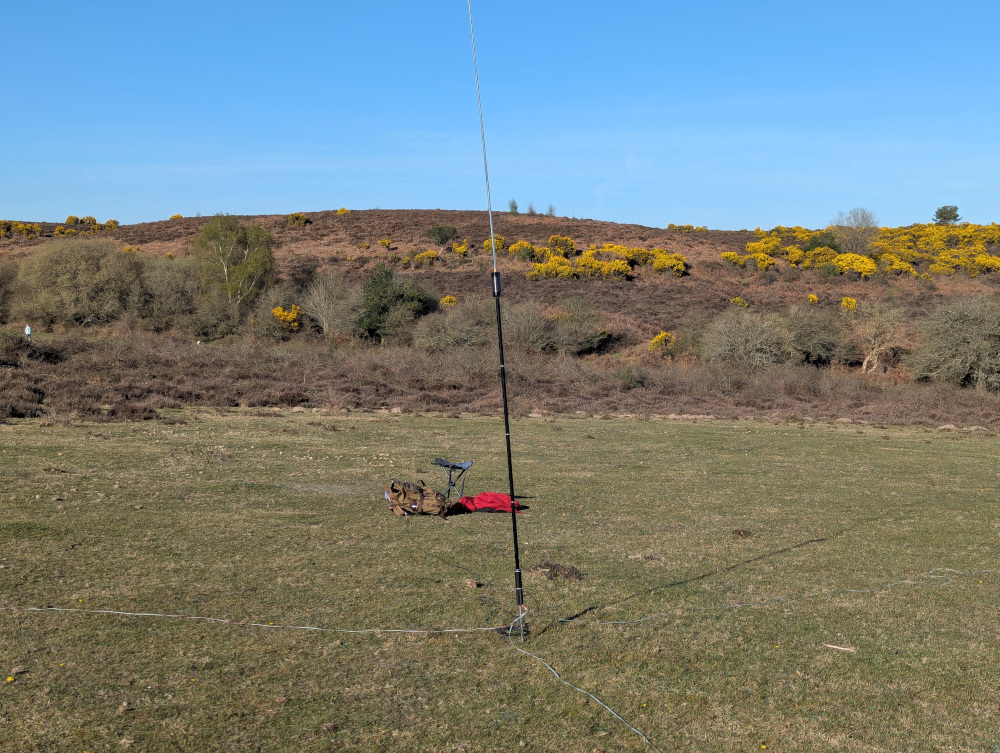 Equipment set up in the circle of grass at Yewtree Bottom
Equipment set up in the circle of grass at Yewtree Bottom
It didn’t seem like any park-to-park opportunities were available, so I stayed on my previous frequency and called CQ again. Seven QSOs in four minutes was a good rate—but by the time I was packing down, it was 1630Z, three and a half hours since the start of the contest.
I had one planned spot left to go, a kilometre away, and only thirty minutes left on the clock.
Deployment 8: Longslade Bottom (IO90et62)
It was time for the last and quickest hike of the day, down the hill and then up the railway embankment. From there, it was then one straight run down the track that used to be the old Dorchester to Southampton railway.
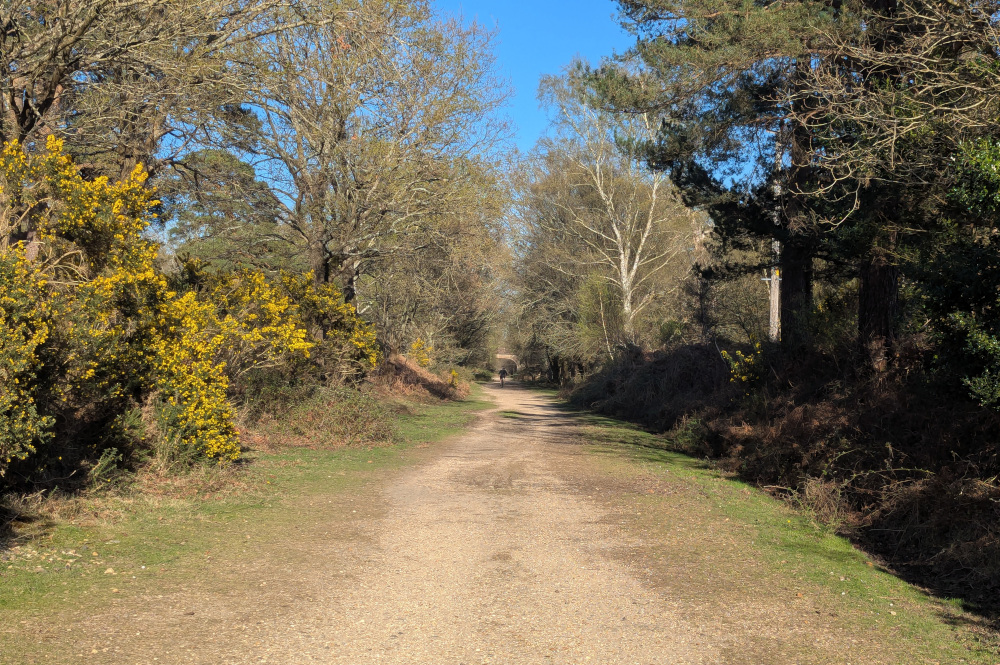 The old railway line across the New Forest
The old railway line across the New Forest
By the time I made it to the road bridge, where the railway once passed underneath, it was 1647Z—nine minutes remained. I didn’t have enough time to make it back to the footbridge I’d passed at the start. But it didn’t matter, I’d done my kilometer, and all I needed was somewhere to set up.
Up a steep slope, past the bridge and to the right, is a triangle of grass next to the road—unremarkable, but flat, and close. I set up. One QSO was all I needed to make the 8th deployment location count for the rally, so I looked for a quick park-to-park. Three were spotted, but I could only hear one, and they were dealing with a pile-up I was unlikely to break through in time.
CQ it was then. Once, twice, three times.
And then it came through, an answer from SP9RXP. I’d made it, and claimed my eighth operating location for RaDAR Rally, with minutes to spare.
I stayed with it, and those last few minutes continued to come through for me. Two more contacts later at 1654Z, I passed the 44 QSOs I’d need for a WWFF activation. Then the last one of the day, 1655Z, TK4RC making my first SSB QSO with Corsica.
And then it was 1656Z, four hours to the minute after my first contact of the rally. Time was up. 47 the total in the log, 8 activation spots, 5.1 miles walked, POTA and WWFF and RaDAR Rally all a resounding success.
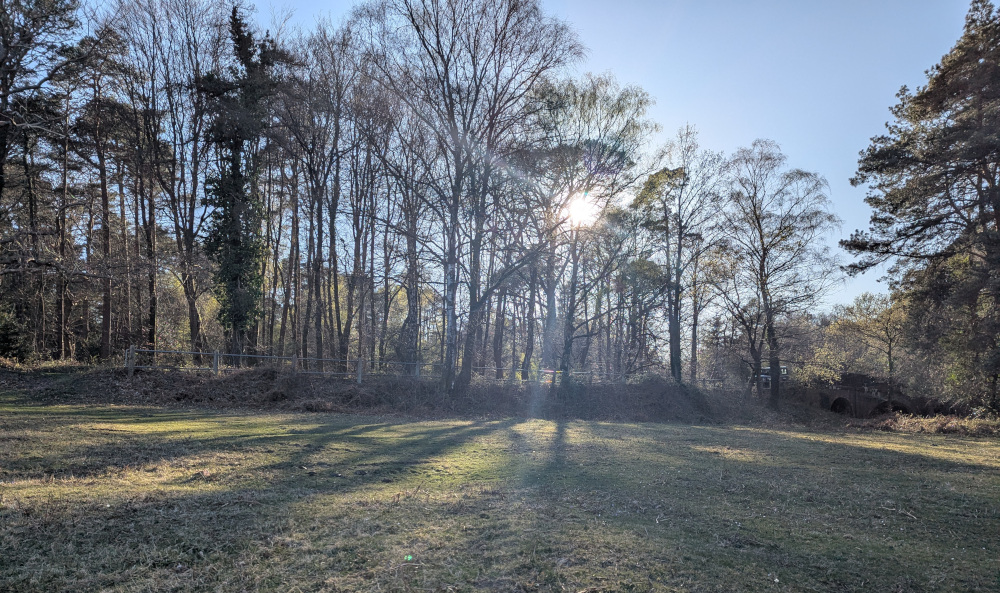 The sun dropping behind the trees, for the end of the Spring 2025 RaDAR Rally
The sun dropping behind the trees, for the end of the Spring 2025 RaDAR Rally
With my log entered into the RaDAR Rally system, I make my total score 469 points. Not bad for a first try, I think.
And I am already looking forward to the next one.
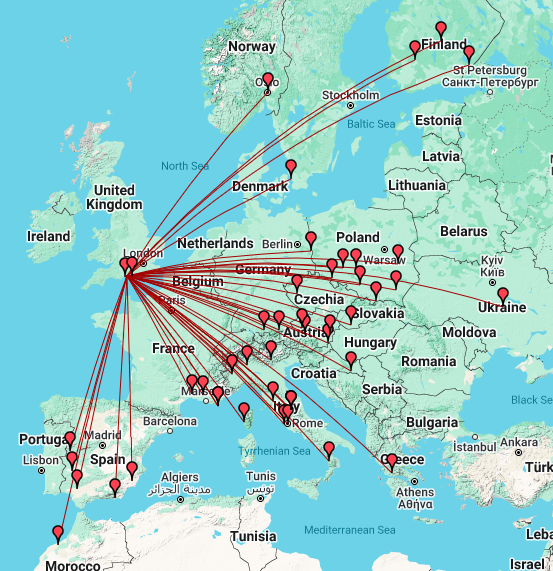
Many thanks to my contacts for getting me through my first RaDAR Rally adventure. See you on the air next time!
Comments